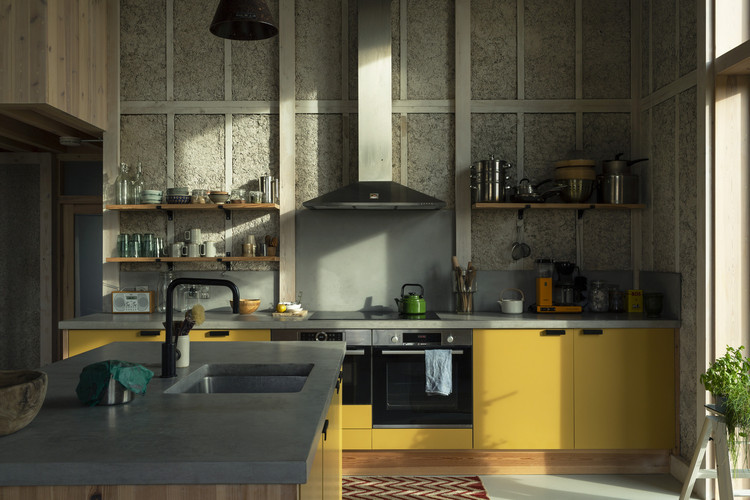
A lot of prejudice and contradictions surround the history of Cannabis sativa around the world. It is estimated that hemp was one of the first plants to be cultivated by mankind. Archaeologists have found remnants of hemp fabrics from ancient Mesopotamia (now Iran and Iraq) that date back to 8,000 BC [1]. There are similar records in China documenting the consumption of hemp seeds and oils, dating between 6 and 4 thousand BC. Upon its arrival in Europe, its main use was for the manufacture of ship ropes and fabrics: even the sails and ropes of Christopher Columbus' ships were made of this material. Likewise, the first books after Gutenberg's invention of the printing press [2] and many paintings by Rembrandt and Van Gogh were made of hemp.
The use of hemp for civil construction is not new either. Mortar made of hemp was discovered on the pillars of bridges built by the Merovingians in the 6th century, in what is now France. It is also well known that the Romans used hemp fiber to reinforce the mortar in their buildings. Nowadays, although there are legal barriers in many countries, the use of hemp as a construction material has had encouraging results, with research demonstrating its strong thermoacoustic and sustainable qualities. Hemp can be shaped into fibrous panels, coverings, sheets, and even bricks.

It is important to start by pointing out that while hemp and marijuana belong to the same species (Cannabis sativa), they are independent classifications with different characteristics. Marijuana has higher percentages - up to 20% - of THC (tetrahydrocannabinol), which is the main psychoactive substance in marijuana and is located mainly in the flower of the plant. Industrial hemp, in turn, is grown for its seeds, fibers, and stem, and contains about 0.3% THC, which is not enough to affect any person.
Hemp demands little water to grow and therefore requires no artificial irrigation, and grows approximately 50 times faster than a tree. After being harvested and cut, the plants are then dried for a few days before being grouped and poured into containers with water, which swells the stems. When dry, the fibers can be utilized, among other uses, for the production of paper, fabrics, ropes, biodegradable packaging, biofuel, and construction materials. In the latter case, the material can be used as a thermoacoustic insulator, much like glass wool or rock, or as hemp concrete, often called hempcrete. To create hempcrete, concrete mixers, hemp, powdered limestone, and water are mixed to obtain a thick paste. Through chemical reactions between the components, the mixture petrifies and becomes a light, yet quite resistant, block. For making walls, the mixture can be arranged as blocks, pulverized, or poured in linear shapes, using the same methods as mud wall construction.


The innovativeness of hemp concrete as a building material lies in its function as a multi-performance material. It can entirely replace mineral aggregates in conventional concretes, and historically it was added to concretes and mortars to avoid retractions in plaster or clay brick [3]. When cured, it retains a large amount of air, with a density is equivalent to 15% of traditional concrete, making it an excellent thermal and acoustic insulator. An interesting feature of the material is that it is both a good thermal insulator and has high thermal inertia [4]. That is, though light and porous, hempcrete can quickly store energy and release it gradually, making it effective for climates with high temperature variation between day and night. It also has good fire resistance, is non-toxic, and is naturally resistant to mold and insects. There are even surveys that point to hempcrete being a carbon-negative material, which in addition to compensating for the carbon emitted in production, actually stores additional carbon within the material itself.

To achieve these thermoacoustic properties, the material needs to "breathe" - that is, interact with both the internal and external environment, allowing the hemp to absorb and disperse water vapor (humidity) and soften temperature fluctuations. Hempcrete walls can even receive coatings as long as they permit these exchanges.
The mechanical performance of hemp concrete is, however, far inferior to traditional concrete or steel. It has a compressive strength of 2 MPa when it does not exceed a density of 1000 kg / m2, which is comparable to adobe bricks [3]. It works better as a fence than for self-supporting walls. Other disadvantages in comparison to common masonry is the curing time, which can be mitigated with the use of bricks. In addition, it remains a relatively expensive product with little information and manpower available to work effectively with this technology.


Although this reality is slowly changing, much of the lack of technical studies on this material is due to legislation. History shows that, more than scientific evidence, the war against cannabis was motivated by racial, economic, political, and moral factors. Moreover, the same prohibition on the drug often applies to plants that would not be used recreationally. Gradually, countries around the world have been reconsidering these bans, with some countries permitting the legal cultivation of cannabis plants for medicinal and even recreational use. Currently, the largest producer of hemp in the world is China, which grows more than 70% of the global total. However, other countries are relevant to global hemp production as well.
Research, testing, and experimentation are essential to making this promising material more popular and cheaper for mass use in construction. Perhaps one of the oldest plants cultivated by humanity can become a sustainable and efficient building material of the future.
Notes
[1] The People's History. The Thistle. Volume 13, Number 2: Sept./Oct., 2000.
[2] Hemp users’ stories and its use as a medical remedy. MMedics
[3] Monika Brümmer, Mª Paz Sáez-Pérez, and Jorge Durán Suárez. Hemp Concrete: A High Performance Material for Green-Building and Retrofitting.
[4] Komsi, Jere. Thermal Properties of Hempcrete, a Case Study. Helsinki Metropolia University of Applied Sciences












